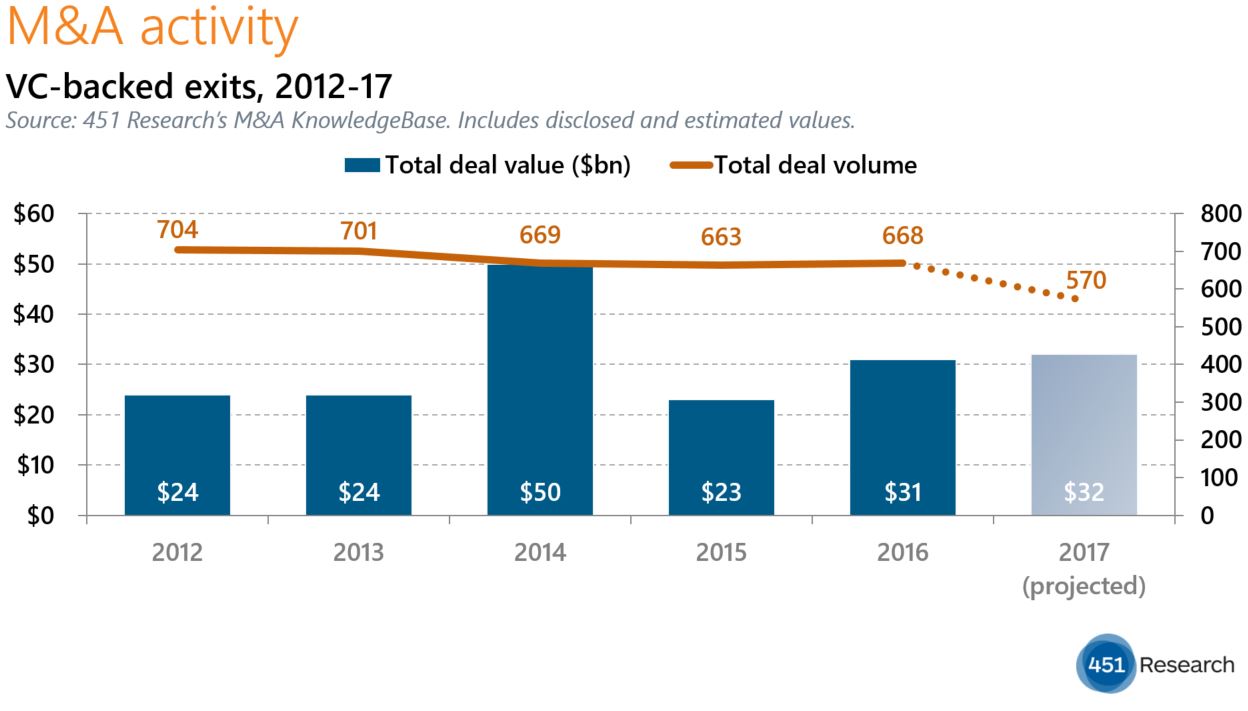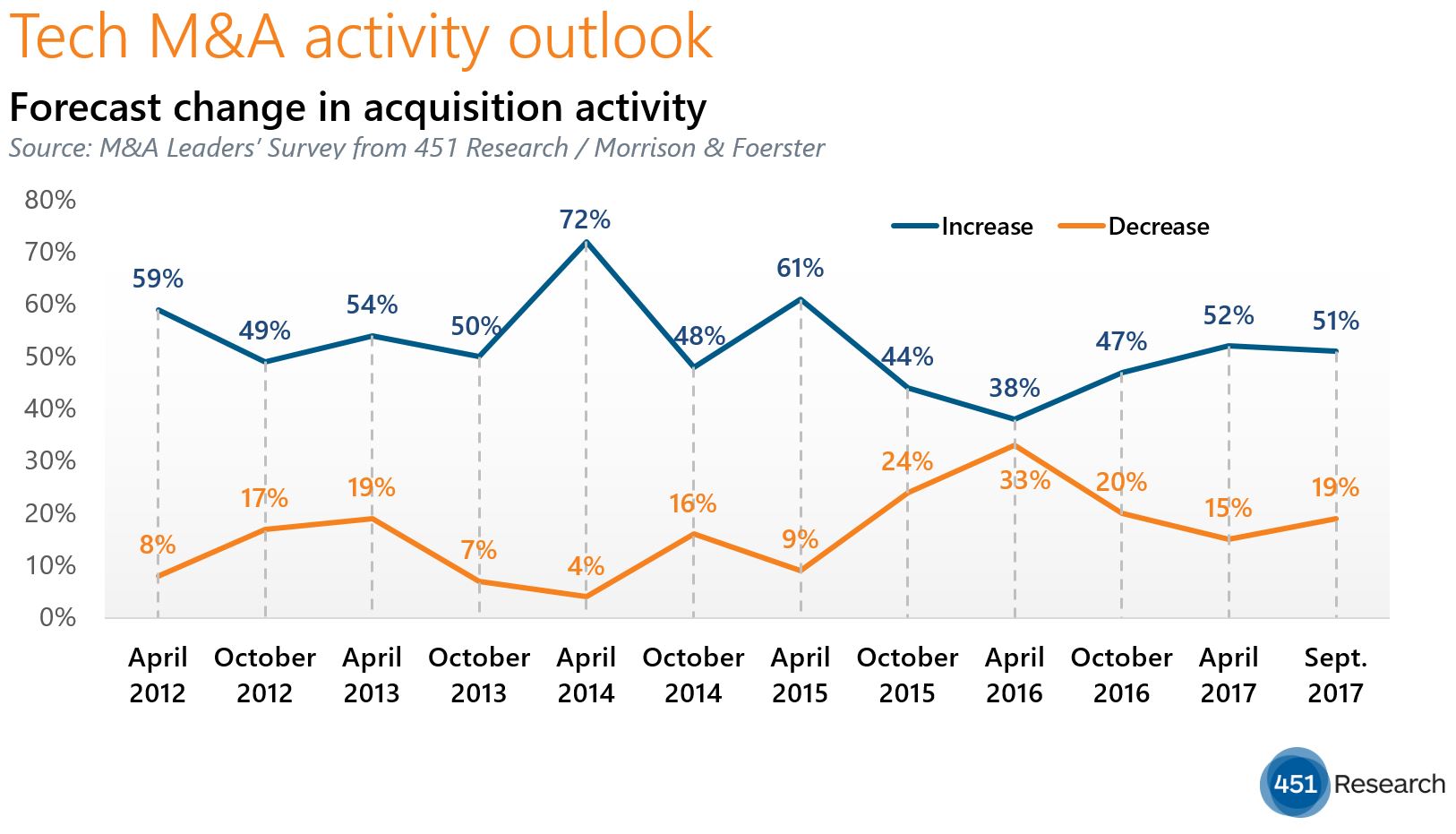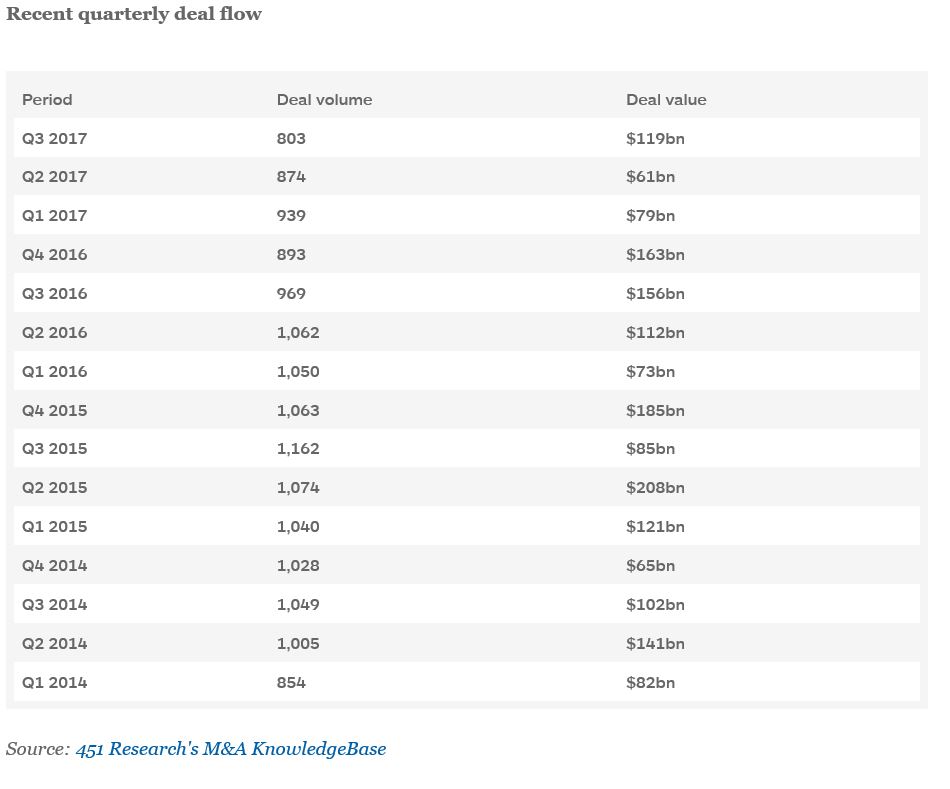Contact: Brenon Daly
This time of year has always been a bit unnerving for investors, and for good reason. Late October has seen some of the most dramatic declines on Wall Street, including the granddaddy of them all, the Great Crash of 1929. Additionally, earlier this week marked the 30th anniversary of Black Monday, when the Dow Jones Industrial Average dropped an almost-unimaginable 23% in a single session. To put that into today’s money, that would equal the Dow dropping more than 5,000 points in one day.
Of course, both of those crashes came before the multibillion-dollar tech market had found its current standing. Nonetheless, even in the nascent industry, there were impacts. For instance, Microsoft, which had only come public a year and a half earlier, got caught in the market’s vicious downdraft in October 1987. Microsoft shares spent the next two years trying to get back to their pre-crash level.
But these days, the equity market in general – and tech stocks specifically – appears to only trade higher. Microsoft shares, which changed hands for less than $1 back in 1987 (on a split-adjusted basis), are currently at an all-time high. Investors value the Redmond, Washington-based company at $600bn, having added more than $100bn to its market cap since the start of the year. Shares of Apple have tacked on 40% so far in 2017. Facebook has posted even more of a gain.
The recent run has left the stock market expensive, with the price-to-earnings multiple for the S&P 500 Index approaching 20, a historically high level. That has made investors increasingly nervous, at least according to 451 Research surveys. Virtually every month so far in 2017, the number of respondents to 451 Research’s Voice of the Connected User Landscape (VoCUL) that tell us they are ‘less confident’ in Wall Street has ticked higher. The latest VoCUL survey shows more than twice as many bears as bulls when it comes to confidence in the stock market.




